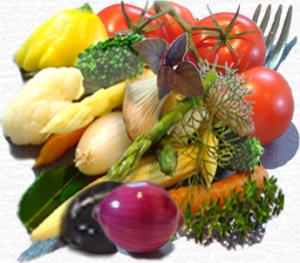
Summertime’s a coming, and so many folks in my neighborhood are busily putting in plant starts, harvesting beautiful flowers, and laying down mulch and fertilizer to bolster the bounty to come. But what nutrients are those delightful bumper crops of spinach and kale pulling up into their leaves besides nitrogen and potassium? You might be shocked to learn how much lead – that blue-gray metal that causes all kinds of neurological and other health problems – exists in urban soil, thanks to an era of lead-based paints, gasoline, and pesticides that dropped out of sight – and into the ground – to become the problem of a future generation: ours.
I surely don’t want to sound alarmist, because I’ve not done an ounce of scientific research on the vastly different areas of Portland to determine where’s good and where’s off limits. But after taking a sample from a garden bed I dug and amended – and even planted – last weekend, and finding it contained 900 parts per million lead, I sank into disappointment and a bit of concern for the rest of our yard. After all, didn’t that fresh spinach salad I had, dressed with balsamic and herbs from our garden, taste and feel so healthy?
Consider testing your soil especially if you’re gardening, or planning to, next to a building built before 1978. That’s the year lead-based paints were banned.
A recent New York Times article highlights the problem with urban gardening in areas where lead paints and pesticides once prevailed. A good read – I found it because I actually had a hard time researching so-called “safe” levels of lead in soil – that is, is there really a threshold at which I should stop worrying and start digging?
So far it seems that 1200 ppm is really the upper limit at which remediation needs to be done, despite a debacle in the W years of raising the threshold and loosening the standard. The so-called safe limit for soil around children’s play areas is 400 ppm. So at 900 ppm, our soil is suspect. Sure, I could have added lime to raise the pH and bind some of the lead, but the risk seems unacceptable. So I’ve abandoned that bed, and today take off new samples from other beds for testing.
I need to do more research on mitigating lead problems in urban gardening – depending on what I find, I may report back here, and I also appreciate your comments on this topic. Lead-laden soil tends to be acidic, and lime and other alkalinizing amendments not only raise the pH but help bind the lead so that it doesn’t get taken up in plants or human tissue. You can build raised beds and bring in fill dirt and compost to keep your veggies above ground level, although you really want to know where your dirt comes from. Gardening in pots is another option. It’s possible that some crops, like large leafy greens, will help remediate the soil and extract lead, but the crop not only can’t be eaten – it shouldn’t be thrown in the compost or perhaps even the trash, as it may contain high lead levels!
Fruiting plants like tomatoes and peppers tend to have much lower lead levels, whereas leafy greens and herbs draw up higher levels into their tissues. It’s important to wash dirt and dust from the plants, and cleaning of any lead-containing particles is more thorough with a very slightly soapy solution.
To find out who in your area conducts soil testing, contact a university extension office, or your city’s environmental services division. There are lots of private labs where you can mail samples, though they’re often more expensive. Gardeners in the Portland Metro area can check the resource list on Growing Garden’s web site for area testing centers. I used Wy’east Environmental Sciences, very reasonable at $20 per sample and very fast results.
I hesitate to post this entry, worrying that would-be gardeners excited about growing their own, local, healthy food will give up and get worried. My intent is only to raise awareness and say “Don’t give up; get smart!” Ask questions, be inquisitive, find answers, seek help and advice. I’m following my own advice with respect to my gardens, and each step of the way learn something new about growing better, healthier, more vibrant food.
Leave a comment